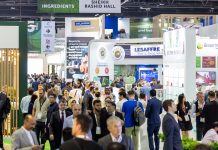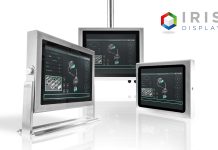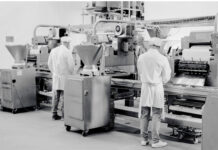
A look at new regulations to export machinery and equipment to the United States and Canada, two large markets for Italian providers of food and packaging technology.
The new edition of UL 508A (Standard for Industrial Control Panels), covering the technical characteristics of industrial control panels intended for the North American market (art. 409 and 670 National Electrical Code), was published at the end of December 2013 and already entered into force. Several significant points of the previous version have been amended, such as transformers grounding, multispeed motors starting, and short-circuit current rating (SCCR). The innovations introduced by the new standard, jointly with other new technical features for the North American market, will have a major impact on Italian suppliers of industrial and non-industrial machines.
US Regulations
US regulations differ from EU policies The European context tends to give priority to worker safety, and the standards are aimed at preventing the danger of electrocution (electric shock). In the North American context, instead, more importance is given to physical security and, therefore, fire risk and intoxication from poisonous gases. The major innovations of the NEC (National Electrical Code), /NFPA70, 2014 Edition, are as follows.
• The ANSI/UL 508A is confirmed as safety standard for industrial control panels, covering low voltage equipment below 1000 VAC, as indicated in the EC (Chapter 1 – EN 60204-1);
• The NFPA 70E, edition 2012, is confirmed as guidance for determining hazards, safe work practices and arc flash labeling;
• The new standard covers inverter starting, and the rating of branch circuit short-circuit and ground fault protective device.
• A new article covering “Hazard Marking” requirements has been introduced, providing the safety signals to be used for industrial machinery (art. 110.21), and one covering the provisions for LOTO disconnecting means (art. 110.25).
• Article 516 “Spray Application, Dipping and Coating Processes” (e.g. spray area) and article 625 “Electric Vehicle Charging System have been revised.
• The new NFPA 79-2012 (Article 670) becomes mandatory, with all that this entails on wiring methods for industrial equipment: the hazards deriving from arc-flash are recognized (NFPA 70E), new ratings for cables used on machinery (2014 NEC) and regulation of AWM cables that can be used as “special cables” under specific conditions.
Furthermore, the new UL 508A includes many novelties and updates as: grounding of transformer secondary conductors and feeders; ventilation of electric boxes; rating of “part winding” and “multispeed” motors; identification of bar systems; use of motor controllers UL 508 marked “Suitable as Motor Disconnect”; inverter and drive protectors; new thermal protectors integral with the motor (NMFT); slash rating of conductors inside the cabinet; DC rating of protectors of safety and control systems; requirements for special enclosure selection NEMA Type 4 or 4X; use of flexible cords; requirements for electric boards in fountains; electric boards for irrigation equipment; and new requirements for determining the short-circuit current rating (SCCR).
Not only the US: the Canadian market
The North American market of industrial machinery is not only represented by the United States, but also by Canada, whereby the latter has adopted a technical-legislative route independently of the US. The electric standard of reference is based on the CSA C22.1 No. 1, Canadian Electrical Code, which expressly mentions the CSA C22.2 No. 14, Industrial Control Equipment (Ed. 2013), i.e. the Electrical Installation Code and Safety standards for electrical equipment, valid in all of Canada’s provinces. As with the US, there is an Authority Having Jurisdiction (AHJ), in charge of approving the product upon completion of the installation on site and of the compliance with reference electric standards. Every Canadian province transposes the Canadian Electrical Code with certain deviations; furthermore, there can be also local standards. The clearest example comes from the Province of Ontario, where there are different inspection levels. In addition to the CSA C22.2 No. 14, ed. 2013, electric equipment is regulated by SPE-100, Model Code for the Field Evaluation of Electrical Equipment (ed. 2013) which involves the evaluation of construction and identification requirements, as well as safety testing of electrical equipment. SPE-1000 is a local code applied not only in the Province of Ontario, but also in British Columbia and Manitoba. Field evaluation is carried out by a Canadian accredited institution. In addition to the SPE-1000, there is the PHSR (Pre-start Health and Safety Review) inspection, Ontario Regulation 851 (in Ontario and in the process of implementation by Quebec). This review is scheduled for each new machine, new installation or extension of an existing line. The review is performed by a Professional Engineer (PE), member of the Province board, and takes into account all issues concerning machine safety and hazards for the operator (risk assessment). As for the pneumatic system of a machine and/or plant, there is the TSSA – Technical Standard and Safety Authority (CSA B51, ASME Sect. 8 Div. 1), which regulates, inspects and approves hydraulic and pneumatic circuits (piping) for pressures above 15 PSI (1 bar) in Ontario. Valid for all Canadian provinces and territory is the Canadian Registration Number (CRN), a number issued for the design and construction of pressurised vessels. The CRN identifies that the design has been accepted and registered for use in that specific province or territory. The CRN is printed on every pressurised vessel or connection constructed according to a registered design.




